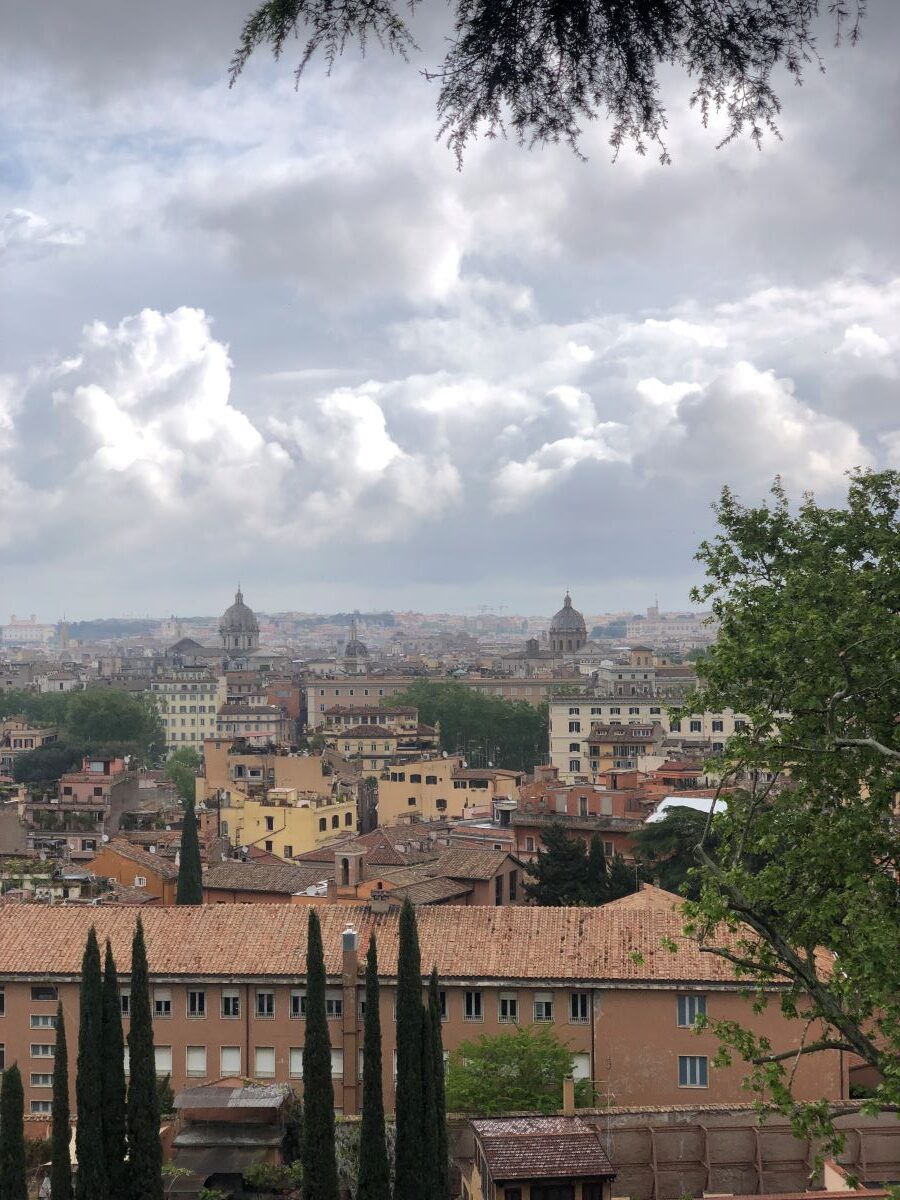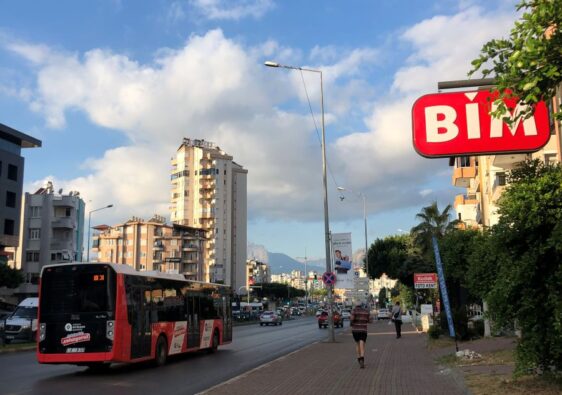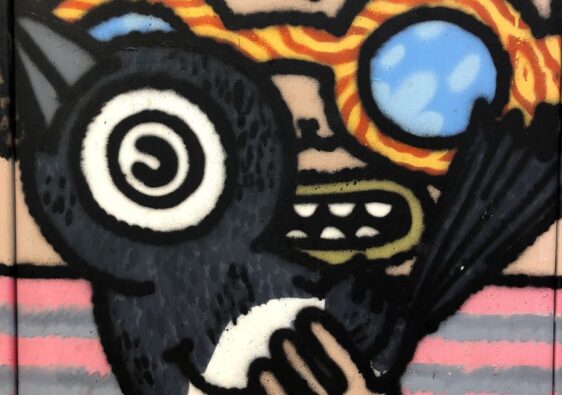An historical treasure that dominates the landscape in this capital city is the Skopje Kale (kale being Turkish for ‘fortress’). Used on the coat of arms which in turn shows up on the city flag, you know this is an important structure. On your next visit, don’t miss Skopje Fortress a real historical treasure.
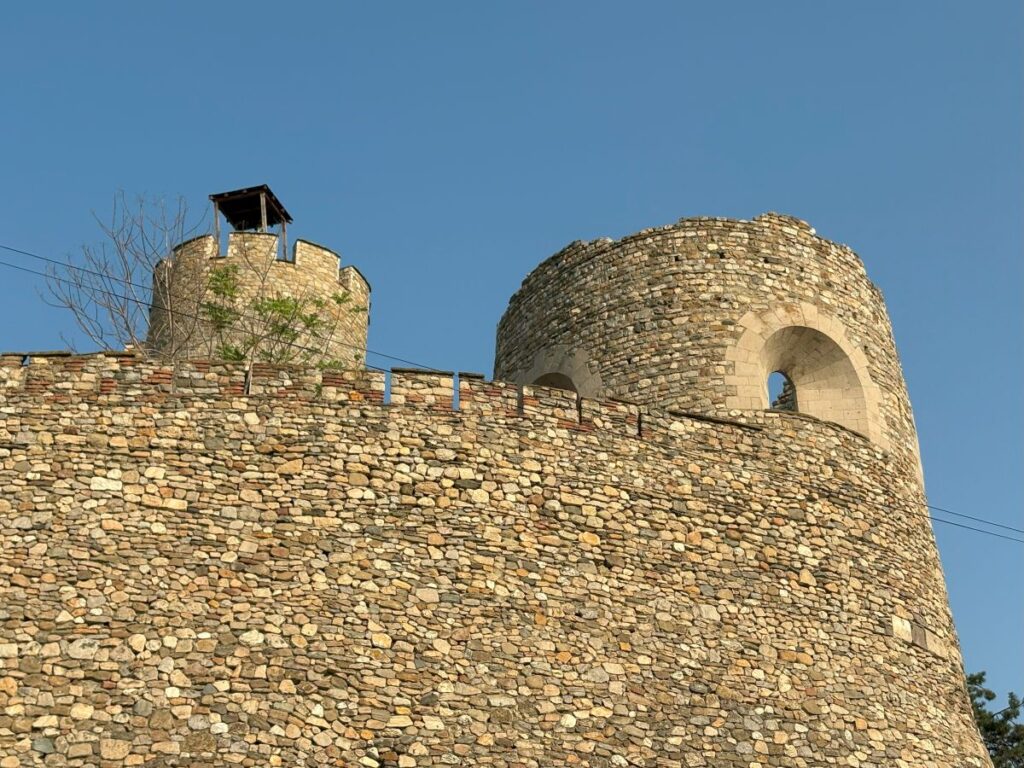
Getting There
Easily done, as it’s located on the highest point in Skopje, overlooking the Vardar River and right downtown. If you are in Old Town or near the Stone Bridge, simply look around and you will see the walls and towers up above.
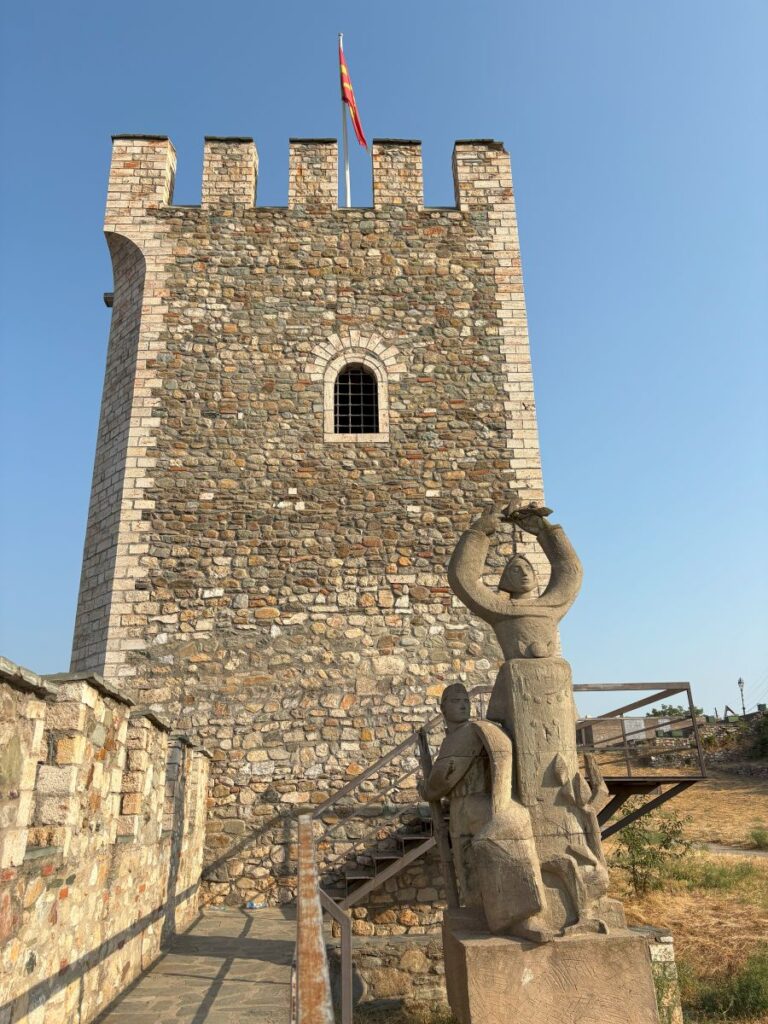
Google link here, the walk from the Old Bazaar will only take about 15 minutes. Entry is completely free and opening hours are seven days a week, from 7am to 6pm. The current entrance is around the back, past the gravel parking lot. Not the original gate if you enter through the park grounds.
Brief History
We know this hill has been inhabited since about 3,000 BC. Artifacts found fairly recently, between 2007 and 2009, such as woodwind instruments and pottery ornaments are evidence of this. The first known fortress on the landscape was built in the 6th century AD during the Byzantine period.
Pieces of stone and marble from the earlier Roman city of Skupi, located nearby, were used in its construction. Skupi was abandoned in 581 after a massive earthquake destroyed the city.
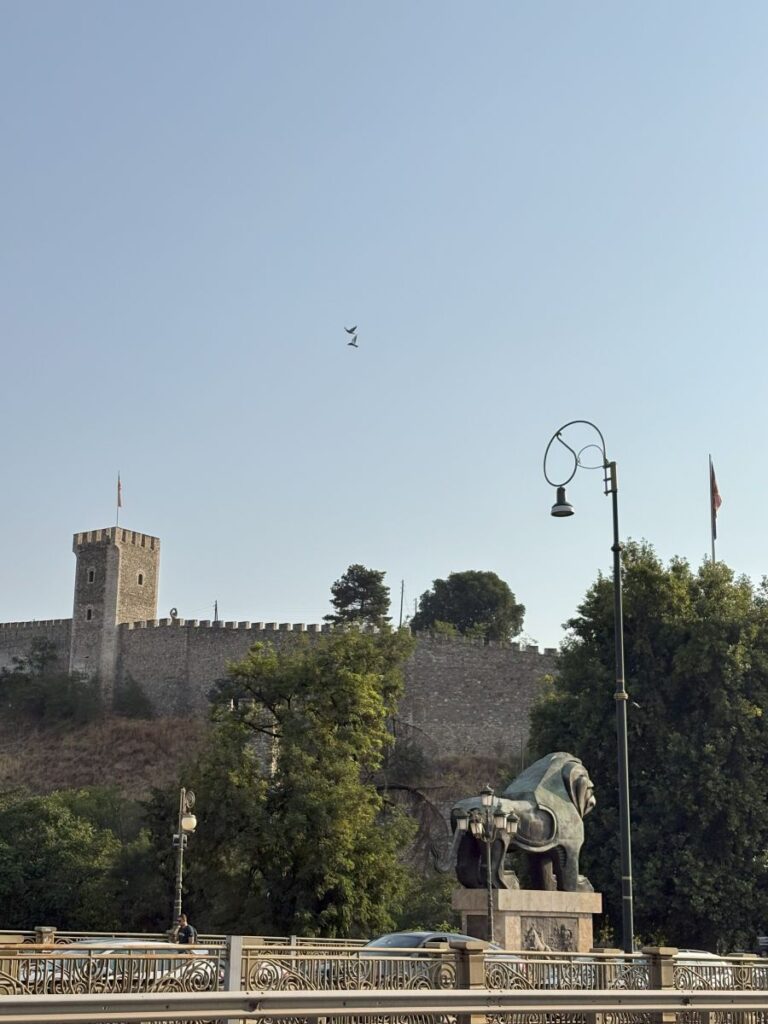
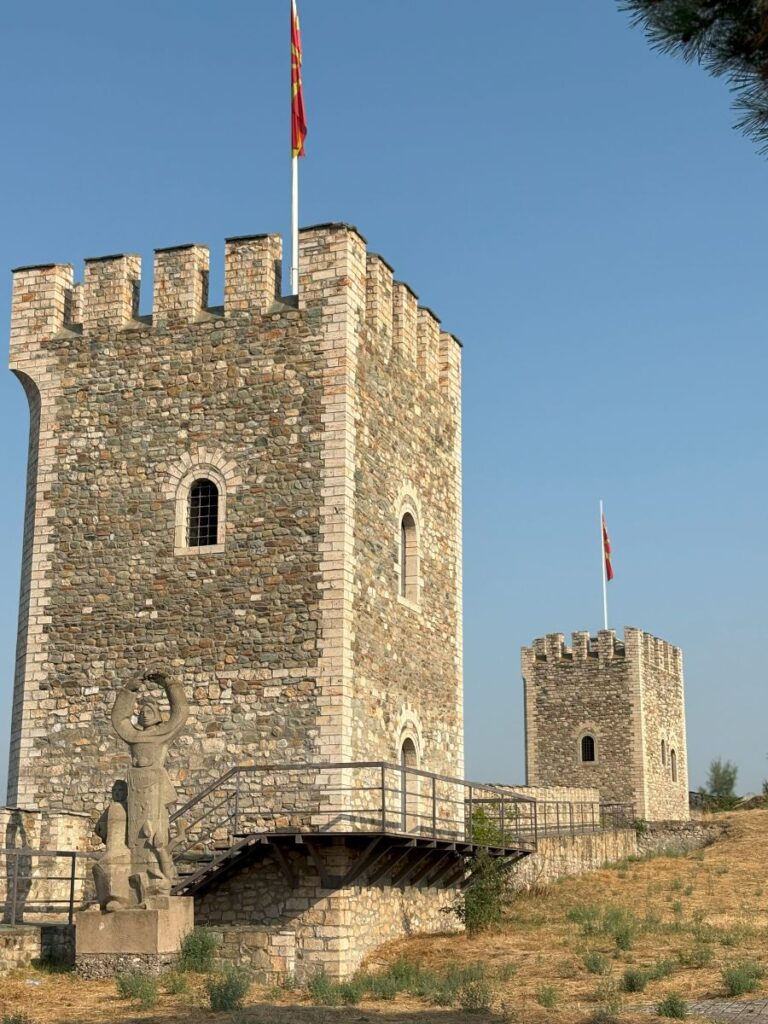
During medieval times, not much is known about the fortress, however it is believed that it was reconstructed several times after suffering damage from various wars. During the 500 years of Ottoman rule, the Kale was abandoned and left empty.
The 19th century is when it begins to be used again in earnest. A military hospital, prison, warehouses and ammunition stores were housed here. The great earthquake of 1963 almost completely levelled the Skopje Fortress and recent efforts have brought it back to life.
So What is There?
Once you enter through the back, a large open space greets visitors. Walk towards the right and to the largest square tower. From there, climb the steps and follow the soaring medieval walls around two sides of the fortress. This walk is where visitors will have the best views of the City of Skopje and the Vardar River down below. It is also the highest point of the fortress.
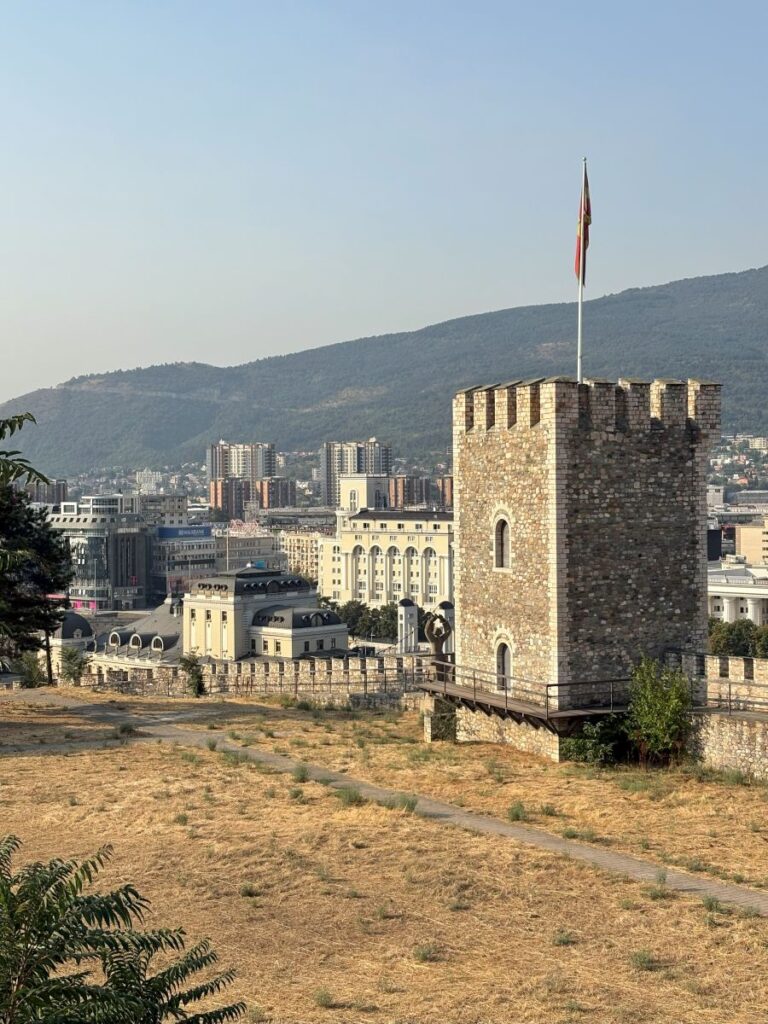
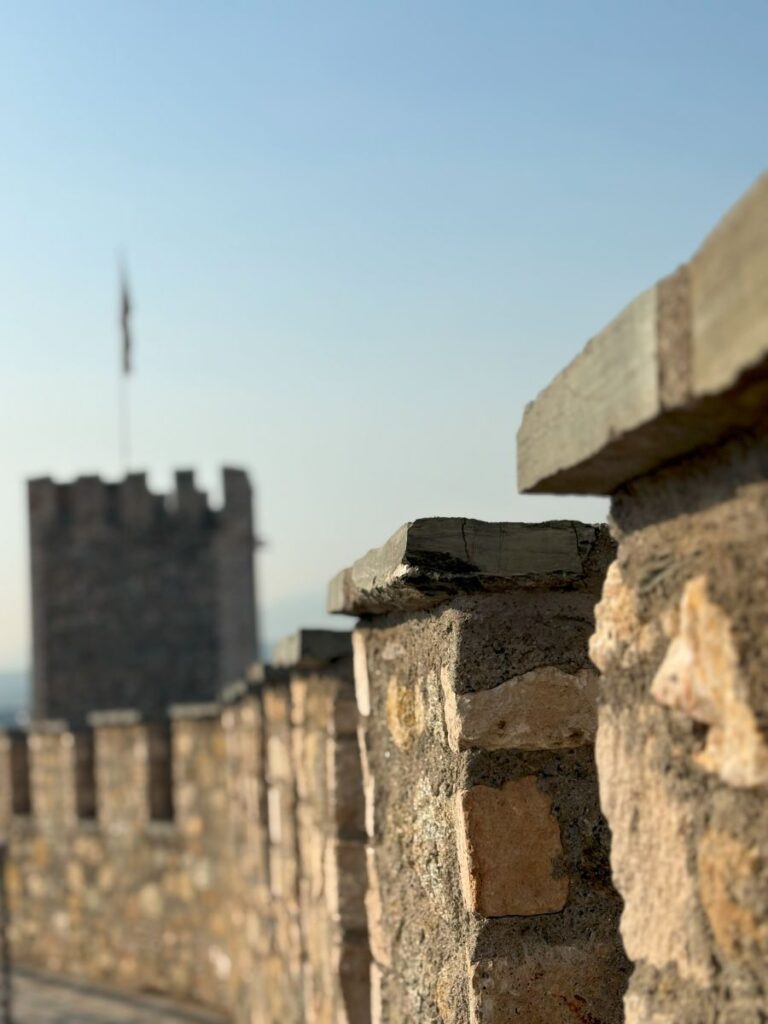
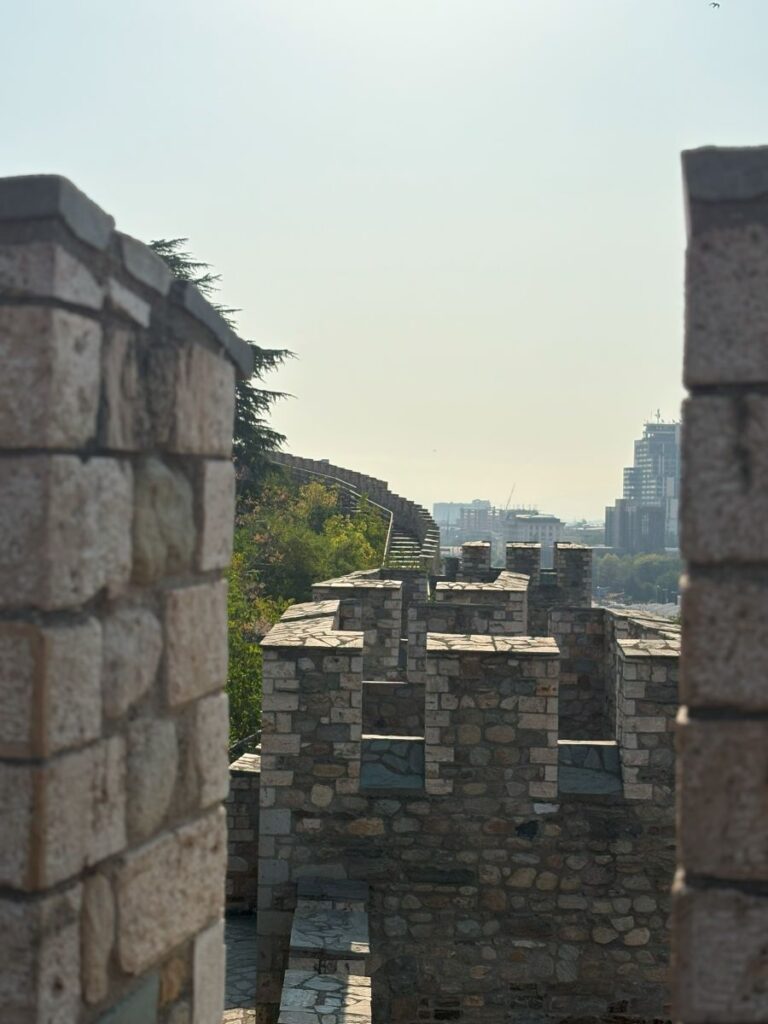
Once you have walked as far as you can go, up and down the stairs but always with the wall to your right, you will be at a corner tower. Look down from here and see an older circular tower. This is your highest point on this side of the fort.
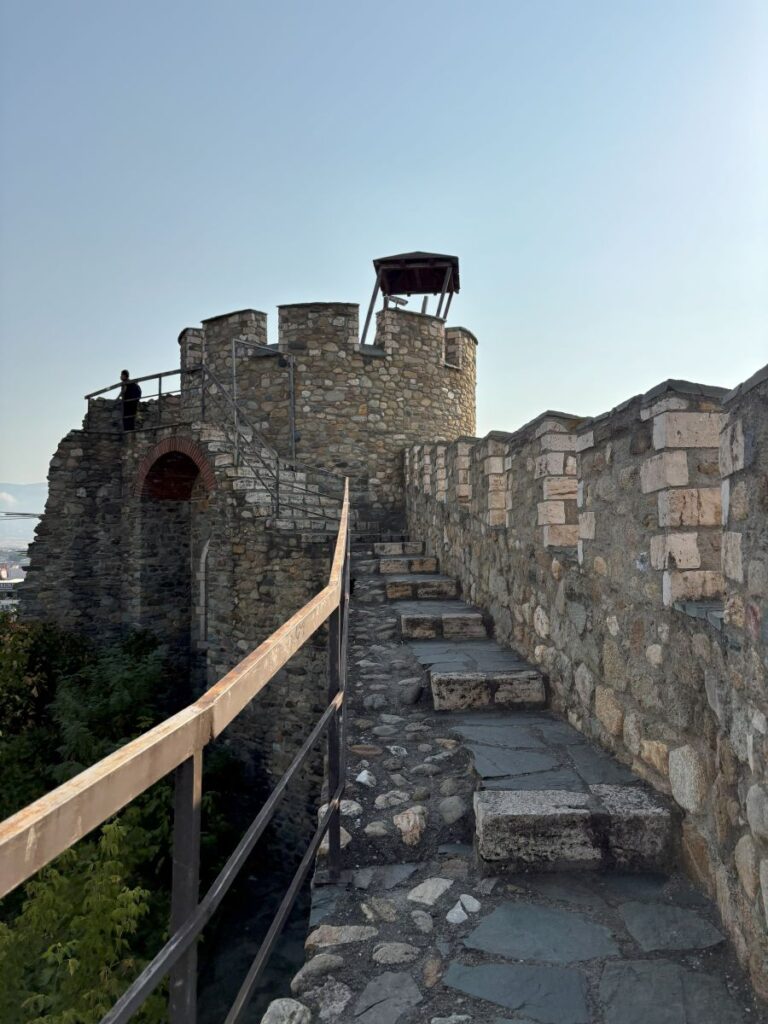
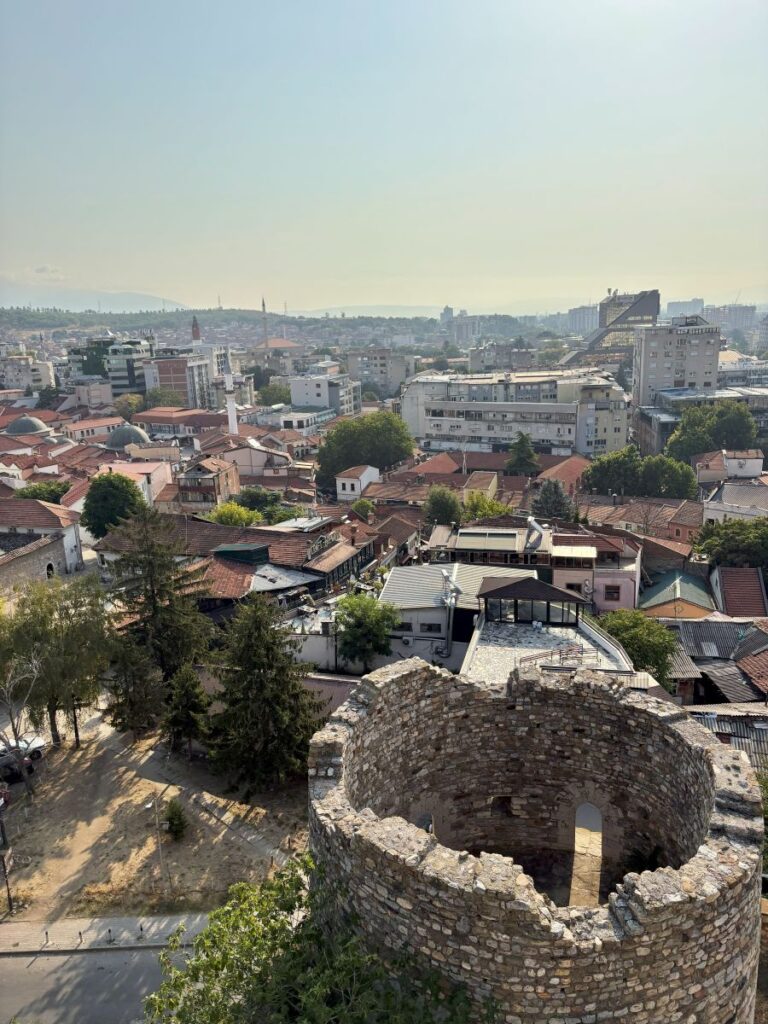
All along the walls you will have noticed places to climb up into and look out. These used to have safe wooden platforms with which to stand on. Having not been cared for, these are now in disrepair and care should be taken around them.
The Middle
That initial route will take you around the outer edges, now let’s discover what is in the middle. Visitors will have noticed an abandoned and more modern concrete structure. During excavations in 2009, the foundations of a Byzantine church were discovered. The plan was to build a museum over these ruins and showcase the recent findings, which included the largest stash of Byzantine coins ever discovered in Macedonia. These are now located in the Archaeological Museum not fifteen minutes away.
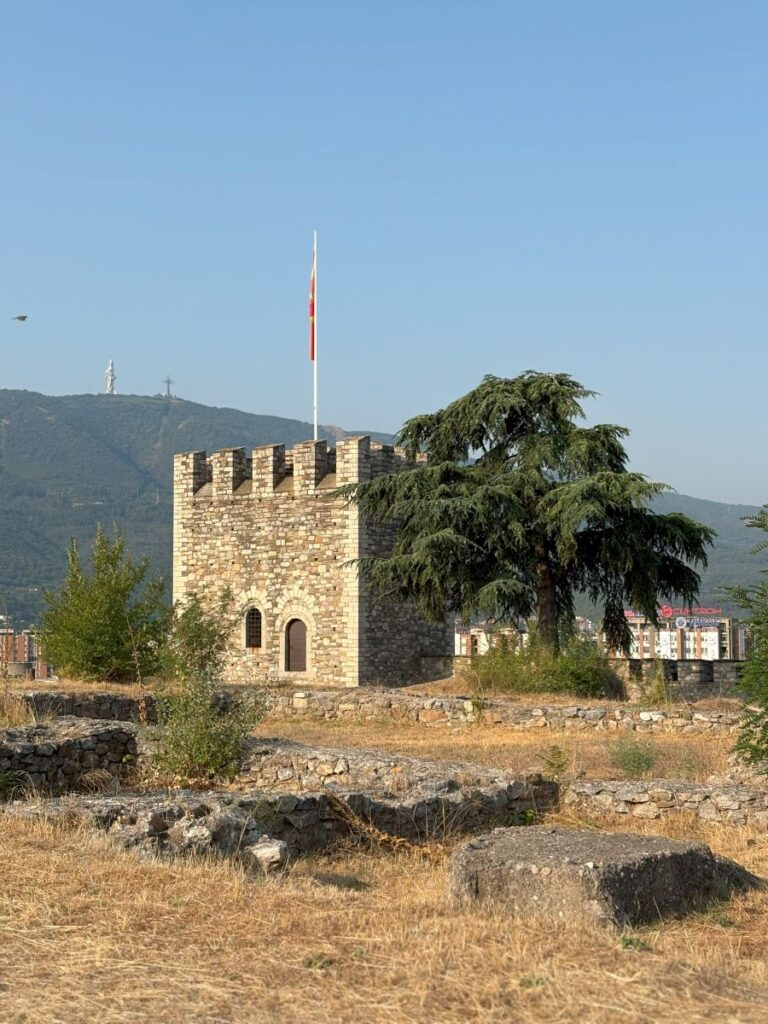
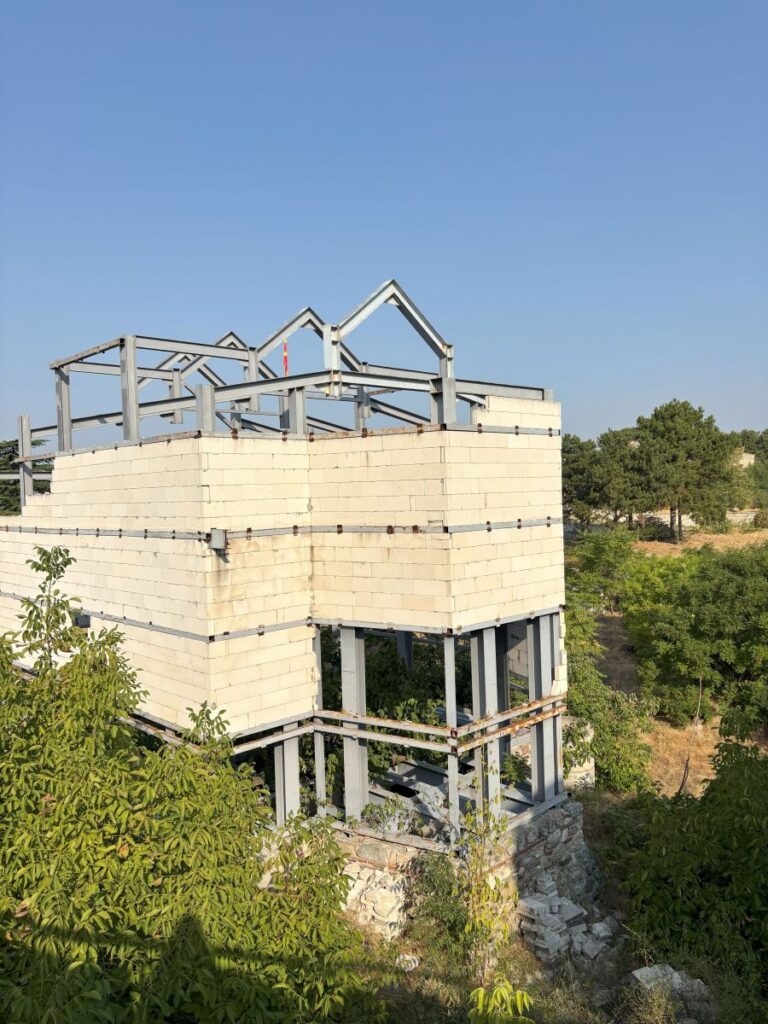
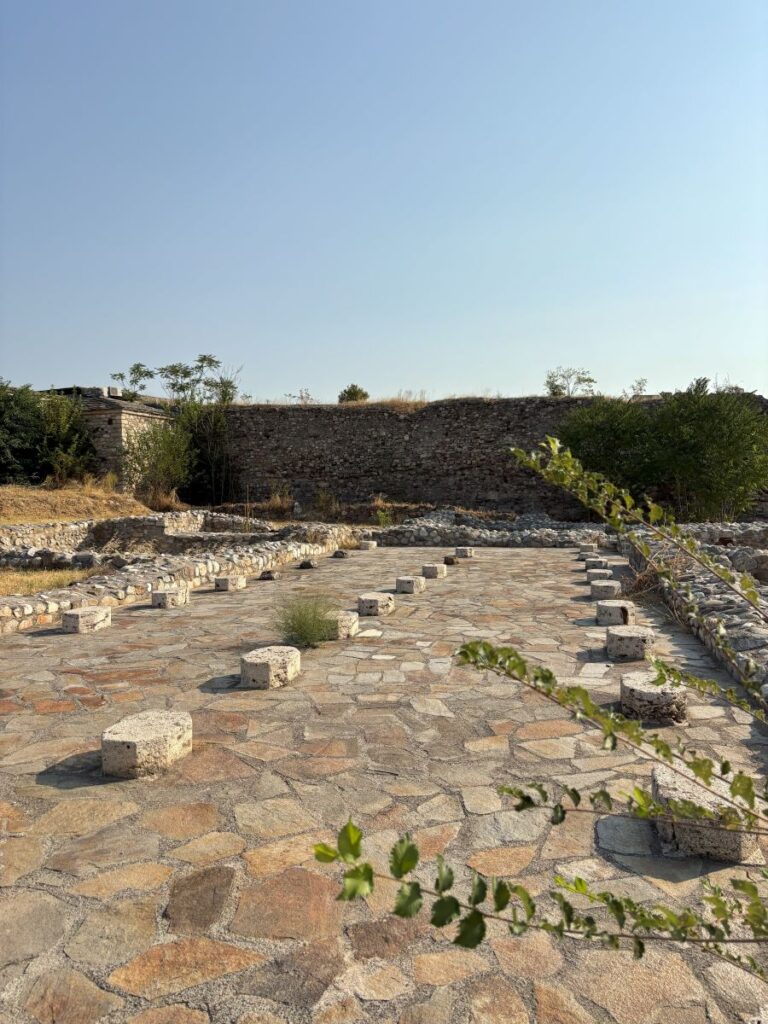
Ethnic Albanians claimed that the sight contained an earlier Illyrian structure and they protested that the church should not have rights over the older structures. After some serious conflicts, fights and disputes, all projects were discontinued and these half-built structures remain inside the fortress.
Walk through the middle of the grounds now, back towards the entrance. On your right, notice the old stone square houses that were the residential area of the fortress. Past here find various other ruins, noticing the different types of building materials and various construction methods. It is apparent and interesting to see that Skopje Fortress was reconstructed many times over its history.
The Views
One of the best reasons to visit is for the views. This is the highest place in the city, and the views are gorgeous. Looking at the central core of the Skopje, one can spot the Communist Era buildings scattered amongst the newer Neoclassical ones.
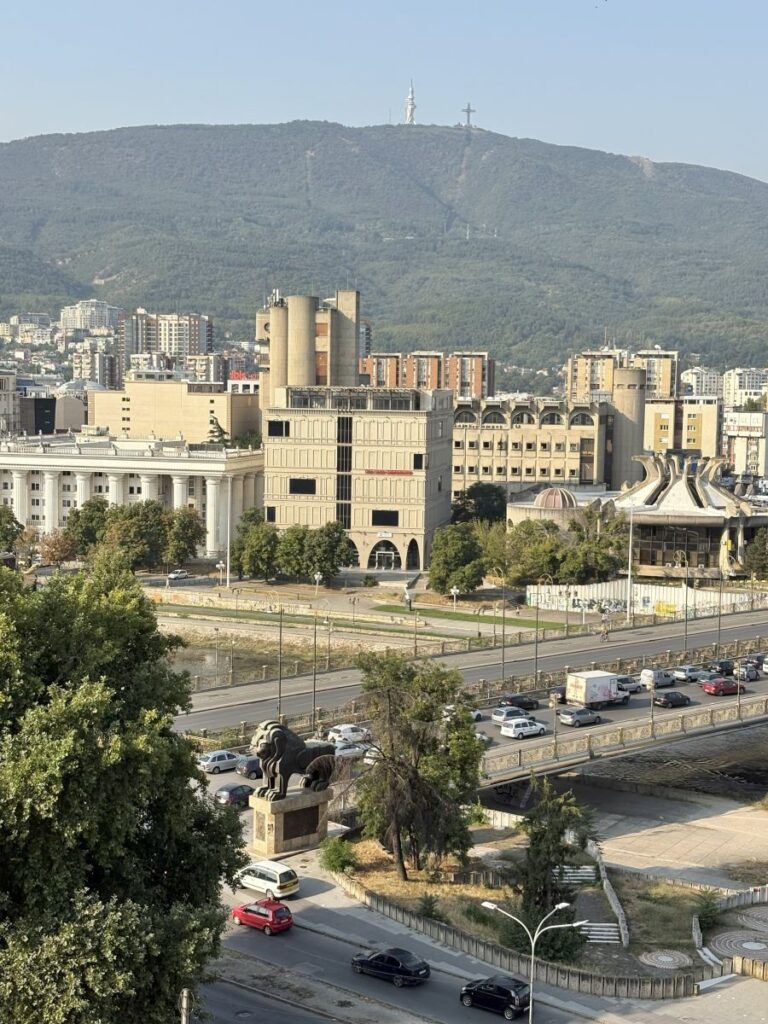
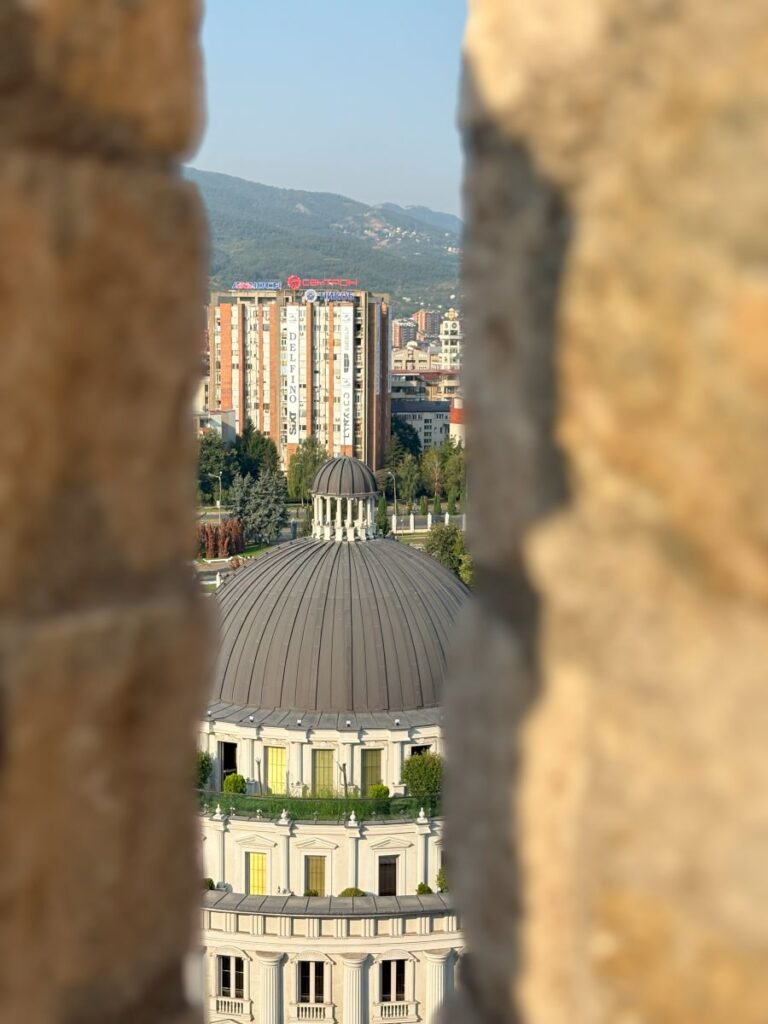
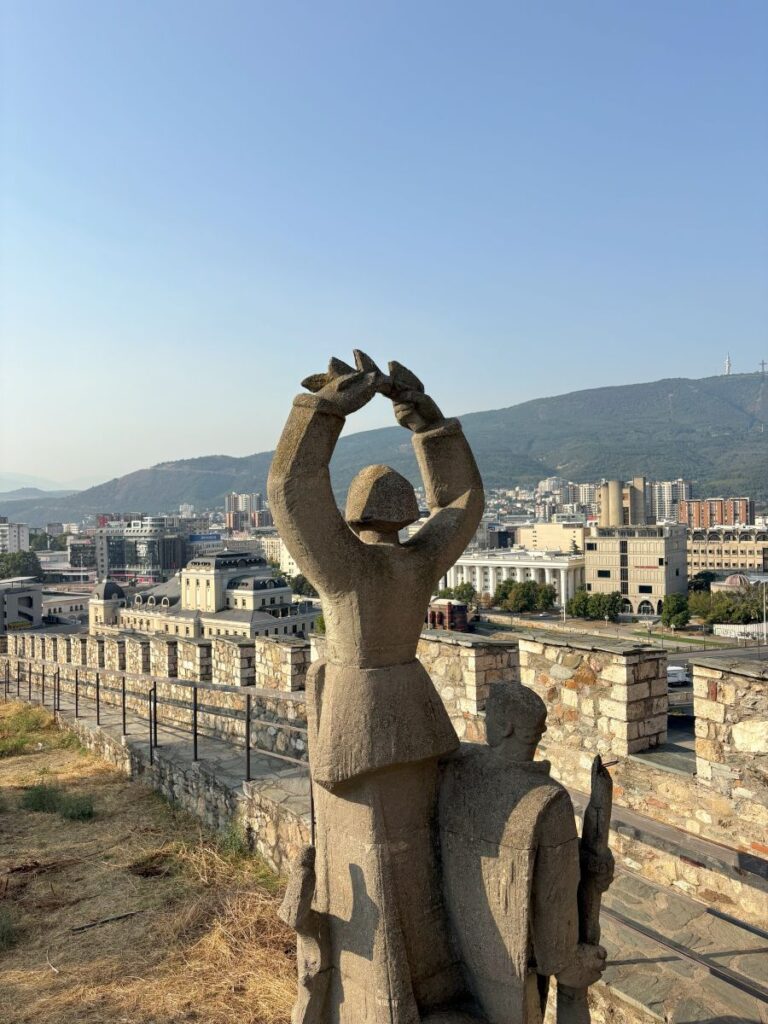
The Vardar River, no matter how shallow these days, is very picturesque as it winds its way through the landscape. Looking now into Old Town and the historical Ottoman district, the minarets of the various mosques dominate the landscape.
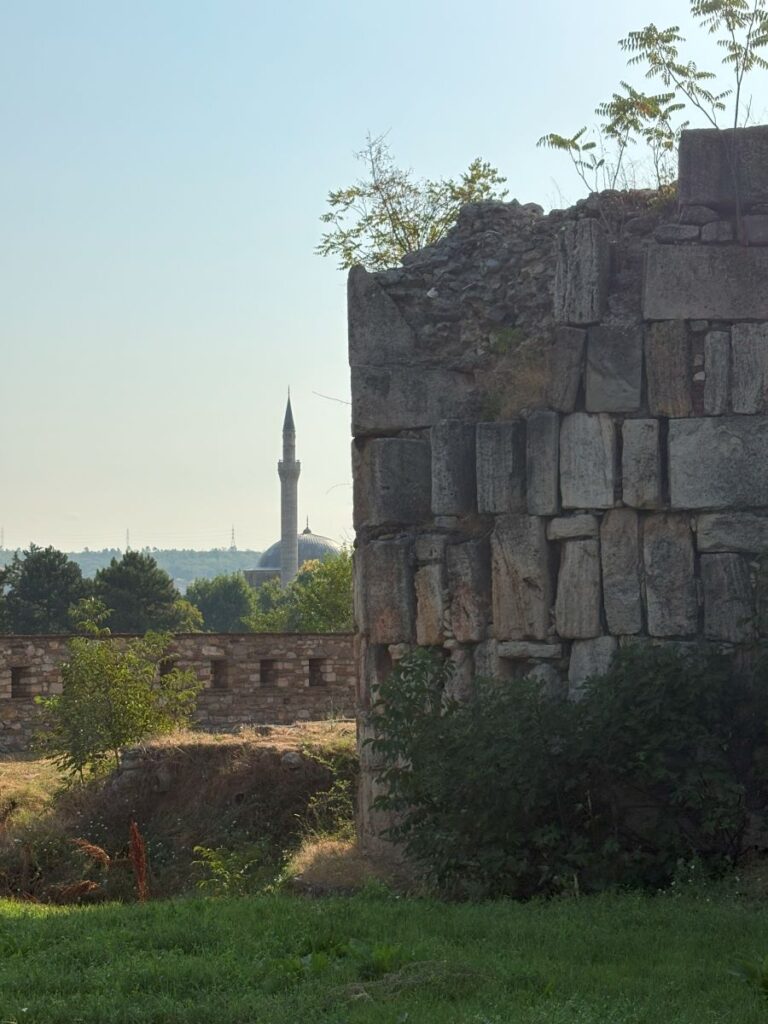
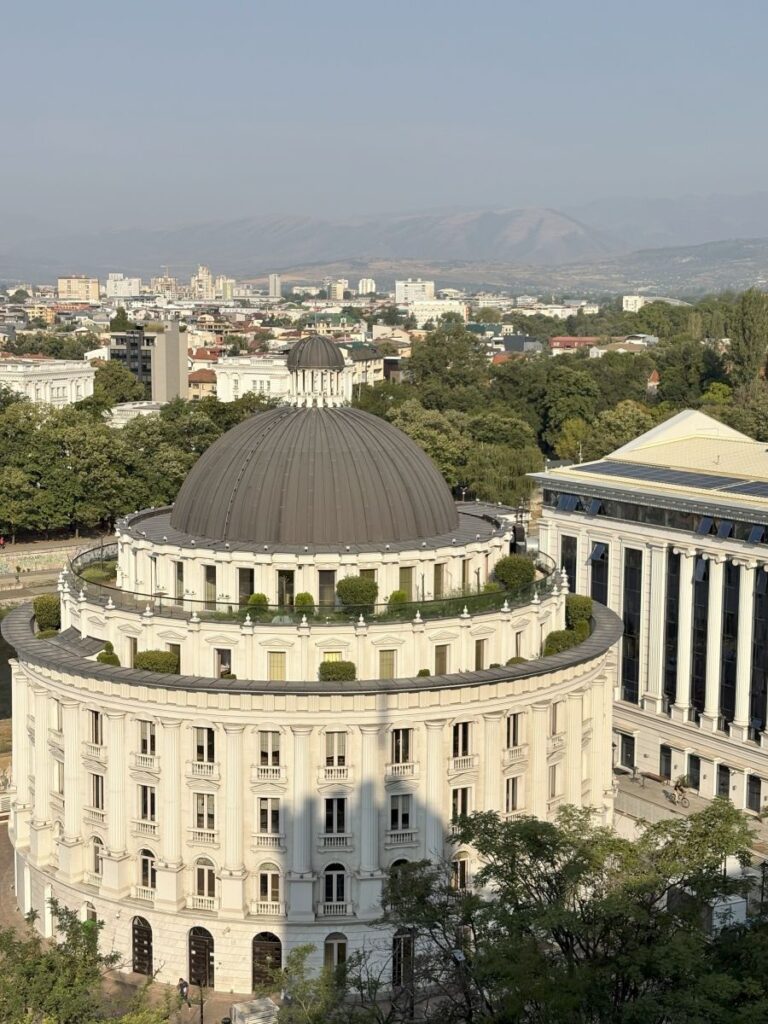
Artifacts
There is no museum here, unfortunately those plans were cut short. There are however, a pile of stone artifacts over near the entrance. Duck into the garden area, under a large tree. There may be some vehicles parked here. Behind them, is a wooden structure, in front of which is exposed shelving.
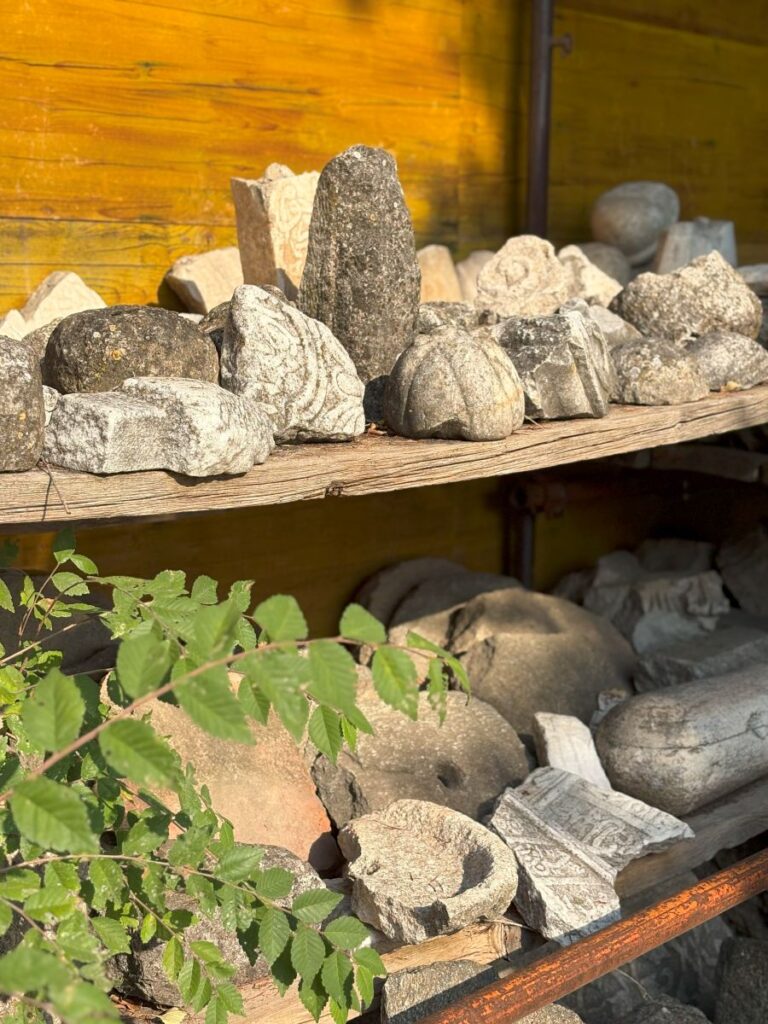
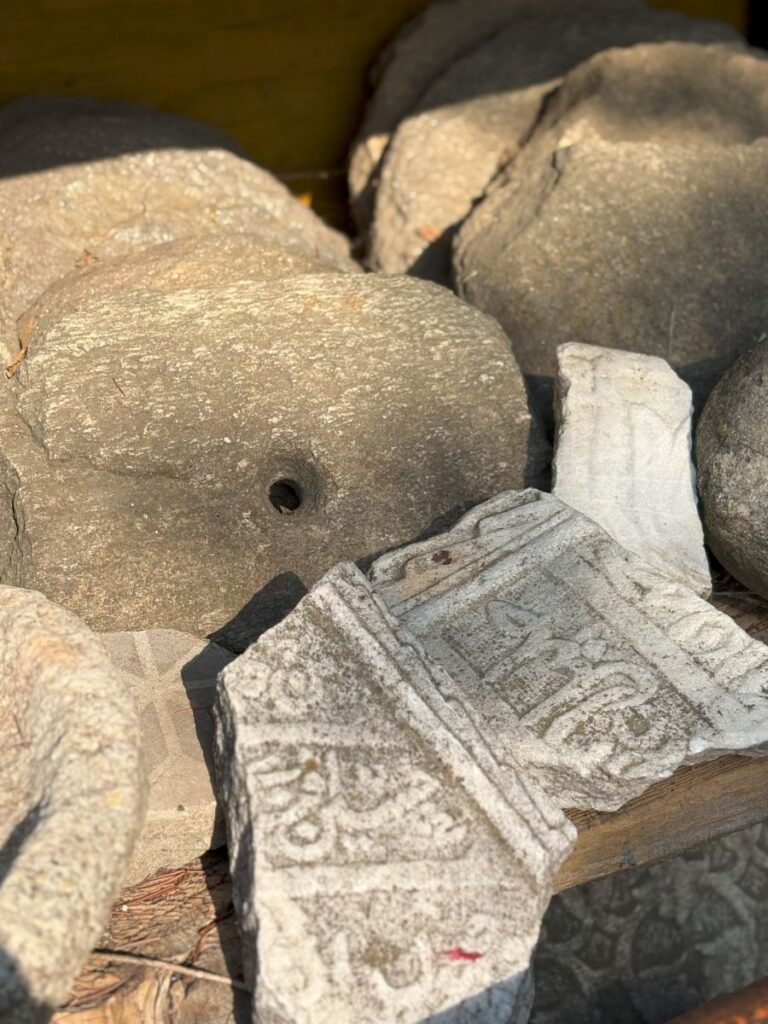
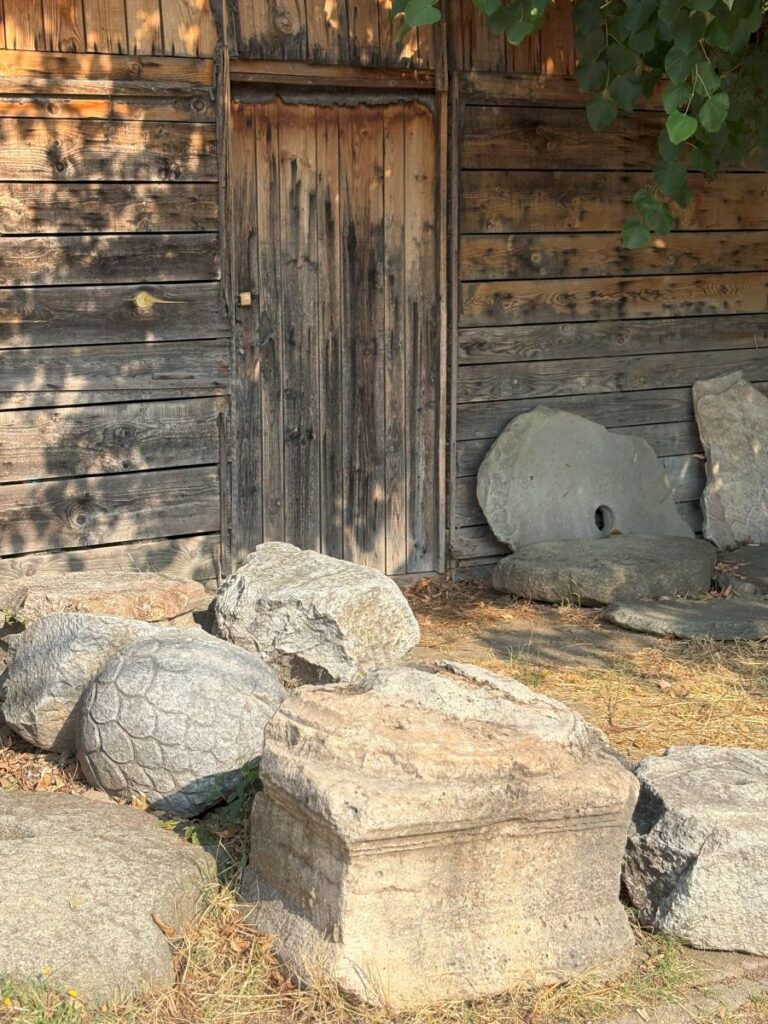
It’s on these shelves that I can see and study all sorts of old stone treasures. Some have inscriptions, others are classical in nature. All are beautiful as is the little family of cats living amongst them.
Exterior
On the outside of the walls is quite a large park like space. Visitors can walk through here on various trails. It’s interesting to see the fortress from below, to get a real sense of just how large those defensive walls are. The main focus is the original Northern Gate which contains an inscription that reads ‘The Wise Son of Mehmed-han in the year 1446’. There once was a moat below this large door and an old and fragile drawbridge is still in place.
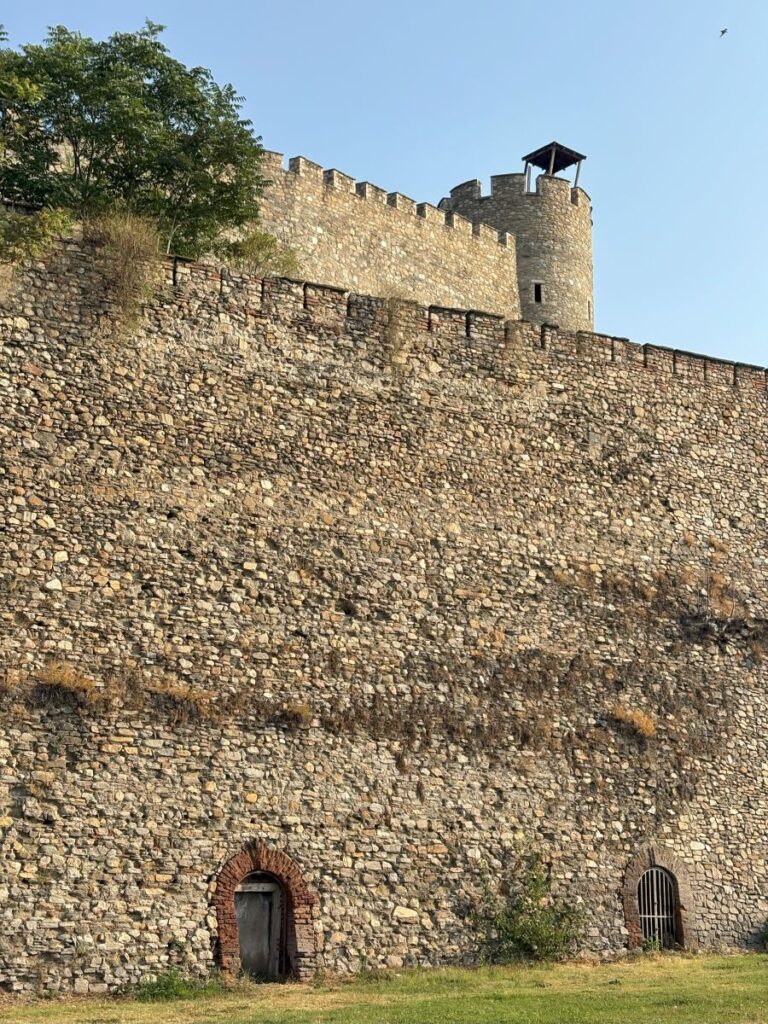
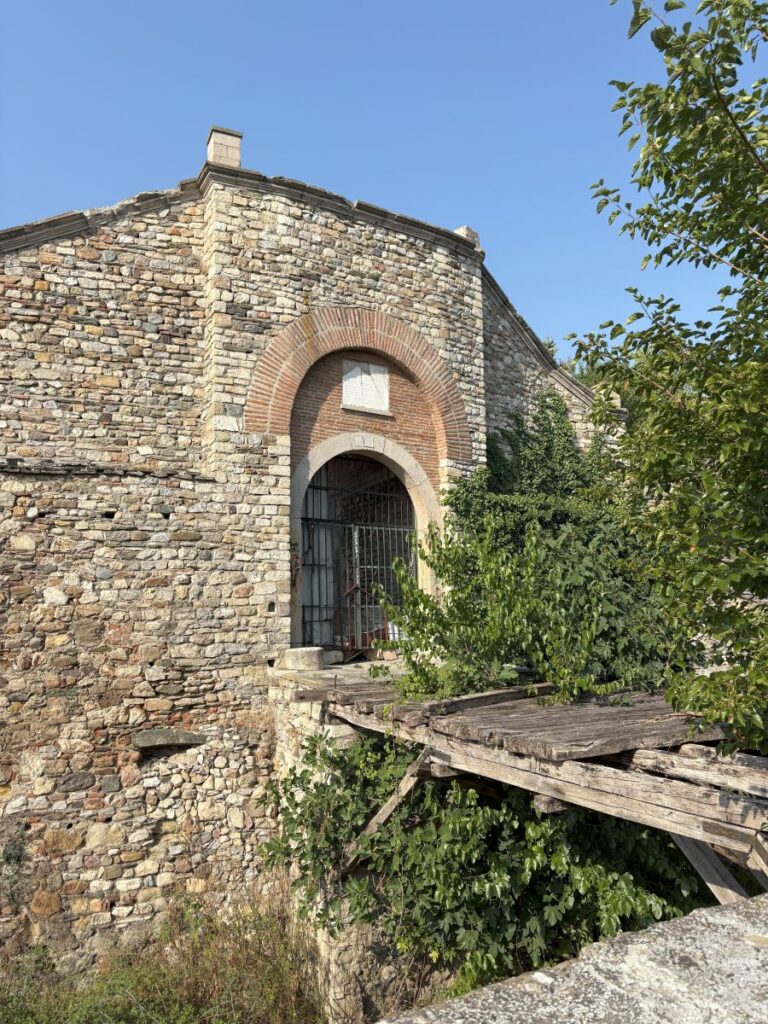
For visitors to Skopje this fortress should be on everyone’s list. Not only is it free, but you can easily walk here within 15 minutes of the Old Bazaar. The history, landscape and views are well worth every step. I can imagine the atmosphere changes with the season. Currently it is dry and brown, but in spring, it might be full of bright green and wildflower. And in winter of course, covered in snow.
